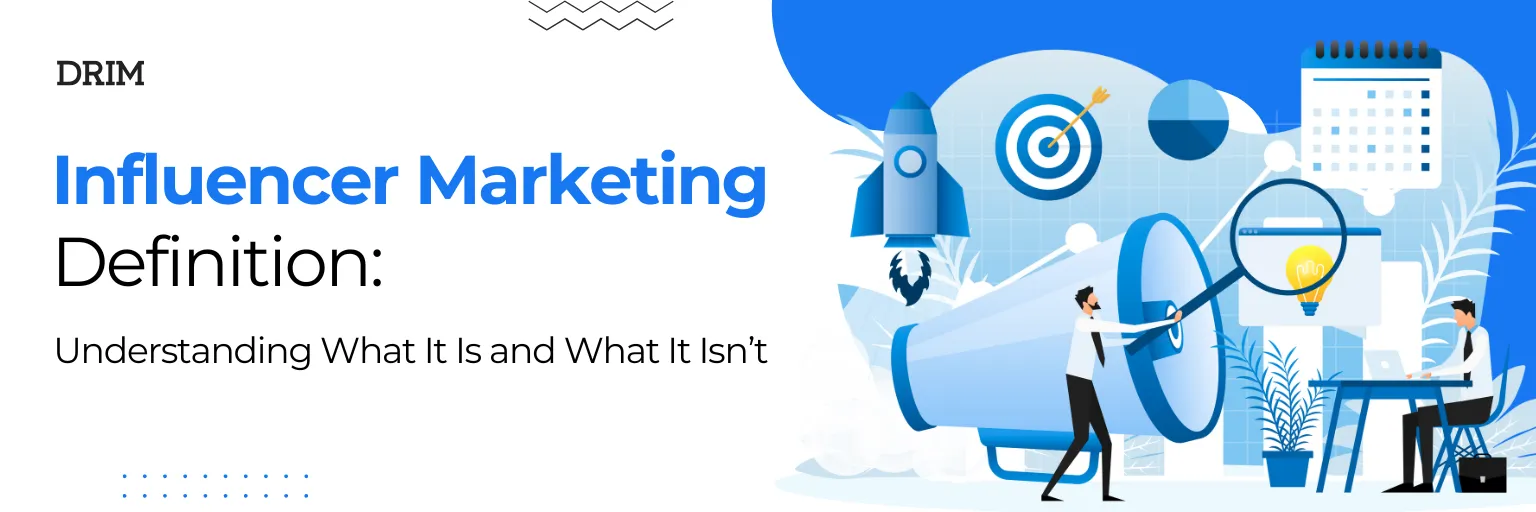
This article will explain what influencer marketing is and, more importantly, what it is not. We’ll explore common misconceptions and clarify the true definition of influencer marketing—providing insights to help brands and influencers avoid pitfalls.
Influencer Marketing: What It Is Not
When defining influencer marketing, it’s easy to get confused with other marketing methods. Here are a few examples of what influencer marketing is not, even though they might look similar.
Affiliate Marketing vs. Influencer Marketing
Affiliate marketing and influencer marketing might seem similar since both involve promoting products or services. However, they serve different purposes.
Affiliate marketing focuses on driving conversions, where affiliates earn a commission for each sale they generate through their unique links. Influencers in affiliate marketing are compensated only when their followers make a purchase.
Influencer marketing, however, is broader. It's not just about quick sales; it's about building a connection. Influencers focus on gaining their audience's trust and adding value through genuine engagement. This approach fosters long-term brand loyalty, which might not immediately translate into direct sales but strengthens the brand's presence and appeal.
Celebrity Endorsements vs. Influencer Marketing
A common misconception is that celebrity endorsements are the same as influencer marketing. While both involve a well-known figure promoting a brand, the approach differs.
Celebrity endorsements rely on famous individuals with broad recognition promoting a product to the masses. This is traditional advertising using fame.
Influencer marketing, however, is about tapping into influencers who have niche authority or expertise in specific areas. These influencers have a more direct and meaningful relationship with their audience, fostering trust and engagement. It’s not just about popularity but also credibility in a particular field.
Paid Advertising vs. Influencer Marketing
Another common misunderstanding is confusing paid social media ads with influencer marketing.
Paid advertising involves purchasing ad space on social platforms to promote your content. Brands directly control the message and targeting parameters, but it’s a one-way form of communication.
Influencer marketing, on the other hand, leverages the authentic voice of influencers to integrate brand messages into their content naturally. Rather than being seen as ads, the posts feel more like genuine endorsements, which tend to engage audiences better.
Definition of Influencer Marketing and What It Is About
Now that we’ve cleared up the confusion, let’s define what influencer marketing really is.
According to Wikipedia, influencer marketing is “a type of social media marketing that involves endorsements and product placements from influencers, people, and organizations with a purported expert level of knowledge or social influence in their field.”
In other words, influencer marketing relies on collaboration between brands and social media influencers to reach a target audience more organically and authentically. Instead of promoting a product directly, influencers create engaging content that subtly integrates the brand, making it more trustworthy and relatable to their followers.
What You Shouldn’t Do in an Influencer Marketing Campaign
While influencer marketing is powerful, it can fail if not executed correctly. Here are some common mistakes to avoid when launching an influencer marketing campaign:
- Not Filtering Your Influencers Enough: Partnering with influencers that do not align with your brand’s values or target audience can backfire. Make sure to choose influencers who truly resonate with your brand message.
- Not Making a Good Targeting Your Audience: A successful campaign depends on reaching the right people. The impact will be minimal if your audience is too broad or poorly defined.
- Randomly Paying for Posts Without Knowing the Return: Influencer marketing should be measured. Don’t just pay for a few posts; hope for the best. Instead, track your Return on Investment (ROI) to ensure your campaign drives results.
At DRIM.one, we use a Cost-Per-Action (CPA) model, ensuring you only pay for real, tangible actions users take (such as sign-ups, purchases, or other conversions). This approach guarantees that your influencer marketing campaign is cost-effective, and you can better control the return on investment (ROI).
Let DRIM Help You Master Influencer Marketing
Influencer marketing is a crucial strategy in today's digital world, but its success hinges on understanding and executing it correctly. To run an effective campaign, it's essential to carefully select influencers who align with your brand, accurately target your intended audience, and focus on achieving measurable results. By adhering to these principles, you can maximize the impact of your influencer marketing efforts.
If you’re ready to take your influencer marketing to the next level, sign up with DRIM.one. Whether you're a brand or an influencer, DRIM’s CPA-based system ensures you pay for real, impactful results, not just exposure. With our expertise, you can maximize your ROI and build stronger relationships with your audience.